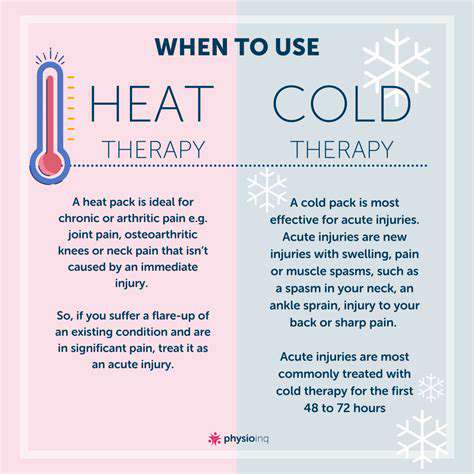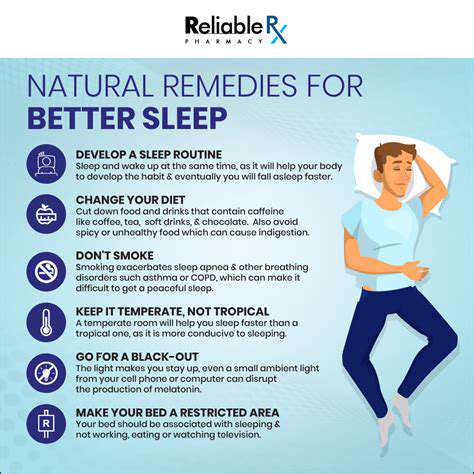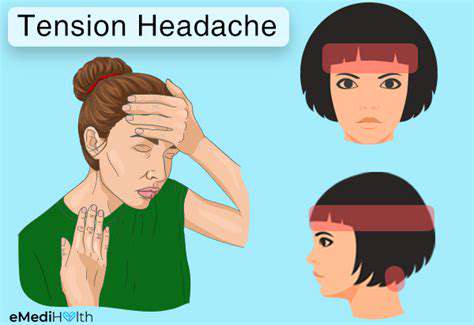Poor Posture and Its Painful Consequences: A Comprehensive Guide
The Hidden Costs of Poor Posture
Understanding the Physiological Impact of Poor Posture
Poor posture can significantly alter the natural alignment of the spine, leading to a cascade of physiological issues. When the spine is misaligned, it places undue stress on surrounding muscles, ligaments, and connective tissues. This can result in chronic pain conditions, especially around the neck, shoulders, and lower back, which may not only cause discomfort but can also limit mobility over time.
Moreover, long-term poor posture can lead to changes in breathing patterns. The diaphragm and chest muscles become restricted, making it harder to take deep breaths. This not only affects oxygen intake but can also lead to decreased energy levels and increased fatigue. Furthermore, improper alignment may contribute to gastric issues, as pressure on the abdominal organs can impede digestion and overall gut health.
In addition to physical complications, poor posture may have negative effects on mental health. Studies suggest a correlation between body posture and mood; slouching can contribute to feelings of depression and low self-esteem. Maintaining an upright posture can instill confidence and promote a more positive mental state, highlighting the intricate connection between our physical bearing and emotional well-being.
The Economic Burden of Posture-Related Health Issues
The financial implications of poor posture are often overlooked yet substantial. Chronic pain stemming from postural issues can lead to significant healthcare costs due to frequent visits to physicians, physical therapists, or chiropractors. These expenses add up, especially if the condition requires ongoing treatment or long-term rehabilitation to correct postural imbalances.
Beyond direct healthcare expenses, poor posture can impact productivity in the workplace. Employees suffering from discomfort or pain may take more sick days or may not perform at their peak ability while working. This lost productivity can not only hinder individual growth and satisfaction but also adversely affect morale and overall workplace efficiency, leading employers to reevaluate their wellness programs.
Some individuals may find themselves requiring ergonomic interventions which, while helpful, can carry steep one-time costs. Investing in ergonomic office furniture, stretching programs, or posture-correcting devices can be beneficial, but the initial outlay can be daunting for many. Therefore, the hidden costs of poor posture go beyond just physical pain, encompassing a broader economic perspective that deserves attention and action.
Common Types of Pain Associated with Poor Posture
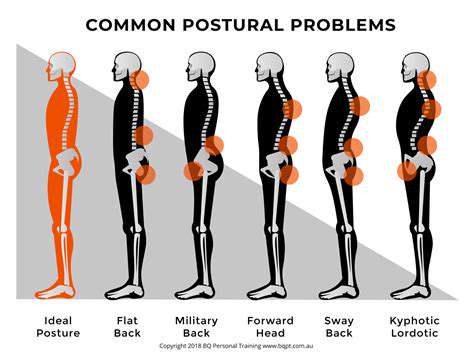
Muscle Strain and Discomfort
Poor posture often leads to significant muscle strain and discomfort in various areas of the body, particularly in the neck, shoulders, and lower back. When the body is poorly aligned, muscles must work harder to maintain stability and support the posture, leading to fatigue and tension. This prolonged strain can cause chronic pain, which impacts overall day-to-day functionality and mental well-being.
As a result of consistent muscle strain, individuals may experience a range of symptoms including tension headaches, stiffness, and limited mobility. Addressing posture can significantly alleviate these issues, allowing for a more comfortable and pain-free existence. Incorporating exercises that target strength and flexibility can help reduce muscle discomfort and enhance posture.
Spinal Misalignment and Nerve Irritation
Spinal misalignment is another common repercussion of poor posture that can lead to widespread pain. When the spine is out of alignment, it can place undue pressure on surrounding nerves, causing irritation and discomfort that often radiates throughout the body. This condition can result in chronic pain syndromes if not addressed promptly.
The effects of nerve irritation due to spinal misalignment are often felt in the form of tingling, numbness, or sharp pains in various regions, particularly in the extremities. Improving posture through ergonomic adjustments and regular physical activity can play an essential role in alleviating these symptoms. By focusing on spinal health and alignment, individuals can greatly reduce the risk of debilitating pain associated with poor posture.
The Psychological Impact of Poor Posture
Understanding Posture: The Basics
Posture refers to the alignment of the body in relation to gravity. This alignment affects not only physical health but also mental well-being. Poor posture can lead to a myriad of issues, including aches and pains, reduced mobility, and even difficulties in breathing. Understanding the basics of good posture is crucial for preventing these long-term consequences.
Maintaining an upright position can facilitate better posture, allowing for optimal organ function and circulation. Conversely, slouching or hunching can compress the lungs and diaphragm, impacting one's ability to breathe deeply. This lack of oxygen can result in fatigue and reduced cognitive function, highlighting the profound connection between physical and psychological health.
Furthermore, awareness of one’s body positioning is essential during daily activities such as sitting, standing, or lifting. Posture is not merely about being straight; it involves engaging core muscles and maintaining a balanced alignment. By actively participating in maintaining good posture, individuals can significantly reduce the risk of developing chronic pain and stress-related conditions.
Ultimately, understanding the fundamentals of posture serves as the first step towards making necessary changes that can improve both physical health and mental clarity. It sets the stage for a deeper exploration into how poor posture influences emotional stability and psychological health.
The Link Between Posture and Mental Health
Research indicates a strong connection between posture and emotional health, with implications that extend far beyond mere aesthetics. Individuals who adopt slouched positions often report feeling less energetic and more depressed. This correlation suggests that our physical stance can influence our mood and emotional state, creating a vicious cycle.
When a person maintains a bent or collapsed posture, it can signal to the brain feelings of defeat or low self-worth. These signals can manifest as a decline in overall mental health, potentially leading to anxiety and depressive thoughts. On the other hand, an upright posture can foster feelings of empowerment and confidence, bolstering self-esteem and resilience against stress.
Moreover, body language plays a crucial role in interpersonal interactions. People tend to respond more positively to individuals who exhibit confident, open postures. This interaction reinforces a positive feedback loop, where maintaining good posture can enhance social experiences, further elevating mood and mental health.
Understanding the link between posture and mental health underscores the importance of being mindful about body positioning. It prompts individuals to consider how simple adjustments to posture can lead to significant improvements in mental well-being, ultimately empowering them to live healthier and more fulfilled lives.
Physical Consequences of Poor Posture
The physical ramifications of poor posture are undeniable and can manifest in a variety of ways. Chronic back pain is one of the most reported issues resulting from poor postural habits. Over time, slouching can lead to strain on the spine, causing discomfort and limiting mobility. Such constraints diminish quality of life and limit participation in everyday activities.
Upper body problems, including neck and shoulder tension, are also common. These areas are particularly susceptible to strain when individuals adopt forward head posture—often exacerbated by prolonged screen time. This tension not only causes physical pain but can also contribute to headaches and migraines, further complicating the individual's health situation.
Moreover, slumping can result in digestive issues as the organs become compressed. This compression can lead to irregularities in digestion and even respiratory difficulties. When the organs aren’t properly aligned, their ability to function optimally is compromised, which can hinder overall health.
Ultimately, the physical consequences of poor posture are multifaceted, intertwining with a person’s lifestyle, productivity, and emotional well-being. Addressing these issues proactively can lead to improved physical health and enhance one’s overall quality of life.
Effective Strategies for Maintaining Good Posture
Adopting effective strategies for maintaining good posture is essential for preventing the issues associated with poor alignment. One of the most straightforward strategies involves implementing ergonomic furniture in workplaces and homes. Proper chairs and adjustable desks help individuals maintain a neutral spine while minimizing strain on the back, neck, and shoulders.
In addition to ergonomic furniture, regular breaks from prolonged sitting are vital for posture maintenance. Standing up, stretching, and walking around every hour can alleviate tension and foster a more natural spine alignment. Incorporating simple exercises aimed at strengthening core muscles can also enhance overall posture and make it easier to maintain good alignment throughout the day.
Mindfulness techniques can also play a role in posture correction. Being mindful allows individuals to notice their postural habits in real-time, enabling timely adjustments. Practices such as yoga and Pilates focus not only on strengthening but also on enhancing body awareness, further instilling the principles of good posture.
Consistency is key in implementing these strategies, as the body adjusts to the newly developed habits over time. Creating a routine that combines ergonomic considerations, regular movement, and mindfulness will boost one’s ability to uphold good posture and reduce the risk of associated physical and psychological issues.
Long-Term Benefits of Good Posture
The long-term benefits of maintaining good posture extend into various aspects of life, impacting both physical and mental health. Improved posture contributes to better alignment of the spine, which decreases the likelihood of chronic pain and musculoskeletal issues as one ages. This alignment ensures that the body functions efficiently, promoting enhanced mobility and longevity.
Moreover, good posture can significantly boost confidence levels. Individuals who stand tall and hold their heads high are often perceived as more authoritative and self-assured, which can open doors in both personal and professional realms. This enhancement in self-esteem can lead to more fulfilling relationships and career advancements.
From a mental health perspective, sustaining good posture has the potential to reduce feelings of anxiety and depression. As previously mentioned, an upright position can send positive signals to the brain, enhancing one's overall mood and emotional resilience. This improvement can create a firm foundation for better stress management and coping skills.
Ultimately, the long-term advantages of good posture underscore its significance for holistic health. By committing to posture correction today, individuals can pave the way for a healthier and more empowering tomorrow, characterized by vitality and psychological balance.
How to Improve Your Posture for Better Health
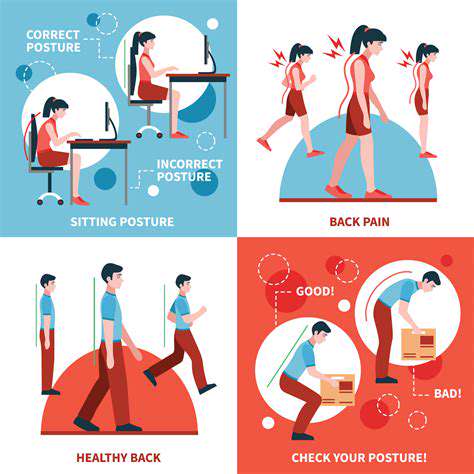
Understanding the Importance of Good Posture
Good posture is not just about standing up straight; it also involves aligning your body properly to avoid undue stress on muscles and ligaments. A proper posture reduces the risk of injuries, enhances physical performance, and is pivotal for overall well-being. When we maintain a correct posture, we allow our body to function more efficiently, which can lead to improved energy levels throughout the day.
Furthermore, good posture plays a crucial role in self-esteem and confidence. Those who exhibit an upright posture often appear more confident and are better at asserting themselves in social situations. This can lead to a positive cycle where good posture not only helps you feel better physically but can also impact your mental state.
Common Causes of Poor Posture
Several factors can contribute to poor posture, including prolonged sitting, lack of exercise, and even stress. In modern society, many individuals spend long hours hunched over computers or devices, leading to muscle imbalances and discomfort. Identifying these habits is the first step toward corrective action. Ergonomic adjustments in your workspace can significantly alleviate these issues.
Additionally, emotional factors such as anxiety or low self-esteem can manifest physically as slouched shoulders or a forward head position. It is important to be aware of how emotional states impact your body language and posture. Cultivating mindfulness can help in recognizing and altering these habits.
Exercises to Strengthen Posture
Incorporating specific exercises into your routine can greatly enhance your posture over time. Core-strengthening exercises like planks and bridges help stabilize your abdominal muscles, which play a significant role in posture support. Consistency is key; doing these exercises regularly can lead to noticeable improvements. Stretching also helps by alleviating tension and tightness in the muscles that contribute to poor posture.
Another effective method is yoga, which combines strength and flexibility, ultimately providing a well-rounded approach to enhancing posture. Many yoga poses specifically target the muscles that help support proper alignment. Regular practice not only enables better posture but can also contribute to an overall sense of calm and wellness.
Daily Habits for Maintaining Good Posture
Adopting daily habits that promote good posture can drastically improve your overall health. Being mindful of your alignment while sitting, standing, or walking can help, as well as taking regular breaks to stretch and move around. Creating a posture-friendly environment, such as having an ergonomic chair, can support these efforts. Additionally, paying attention to how you carry objects and incorporating techniques, such as lifting with your legs, will reduce strain on your back.
Another simple yet effective habit is to engage in conscious breathing. Deep diaphragmatic breathing encourages alignment and strengthens the core muscles, reinforcing your posture over time. Practicing breathing techniques throughout your day will help you remain aware of your posture.
The Role of Technology in Posture Improvement
Modern technology can be both a boon and a bane for our posture. On one hand, applications and software exist to remind users to take breaks and check their posture while working. These tools can effectively combat long hours spent hunched over screens, promoting healthier work habits. Using technology wisely can foster an environment that encourages better health.
Moreover, wearable devices have emerged as a valuable aid in improving posture. Some devices provide real-time feedback to users on their body alignment, sending reminders to adjust their posture as needed. This innovative use of technology makes it easier to stay accountable and consistent in your journey toward better posture.

